Related Research Articles

Zonnebeke is a municipality located in the Belgian province of West Flanders. The municipality comprises the villages of Beselare, Gheluvelt, Passendale, Zandvoorde and Zonnebeke proper. On January 1, 2006, Zonnebeke had a total population of 11,758. The total area is 67.57 km2 which gives a population density of 174 inhabitants per km2.

Hawthorn Ridge Redoubt was a German field fortification, west of the village of Beaumont Hamel on the Somme. The redoubt was built after the end of the Battle of Albert and as French and later British attacks on the Western Front became more formidable, the Germans added fortifications and trench positions near the original lines around Hawthorn Ridge. At 7:20 a.m. on 1 July 1916, the British fired a huge mine beneath the Hawthorn Ridge Redoubt. Sprung ten minutes before zero hour, the mine was one of 19 mines detonated on the first day of the Battle of the Somme. Geoffrey Malins, one of two official war cameramen, filmed the detonation of the mine. The attack on the redoubt by part of the 29th Division of VIII Corps was a costly failure.

The St. Julien Memorial, also known as The Brooding Soldier, is a Canadian war memorial and small commemorative park located in the village of Saint-Julien, Langemark, Belgium. The memorial commemorates the Canadian First Division's participation in the Second Battle of Ypres of World War I which included fighting in the face of the first poison gas attacks along the Western Front. The memorial was designed by Frederick Chapman Clemesha and was selected following a design competition organized by the Canadian Battlefield Monument Commission in 1920.
The Ypres Salient around Ypres in Belgium was the scene of several battles and an extremely important part of the Western front during the First World War.

The Passchendaele Canadian Memorial is a Canadian war memorial that commemorates the actions of the Canadian Corps in the Second Battle of Passchendaele of World War I. The memorial is located on the former site of Crest Farm, an objective captured by the 4th Canadian Division during the assault of 30 October 1917.

The Canadian Hill 62 Memorial is a war memorial that commemorates the actions of the Canadian Corps in defending the southern stretches of the Ypres Salient between April and August 1916 including actions in battle at the St Eloi Craters, Hill 62, Mount Sorrel and Sanctuary Wood. These battles marked the first occasion in which Canadian divisions engaged in planned offensive operations during World War I. In those actions the Canadians reconquered vital high-ground positions that denied the Germans a commanding view of the town of Ypres itself.

Zillebeke is a village in the Flemish province of West Flanders in Belgium. It is a former municipality which is now part of Ypres.

Passchendaele is a 2008 Canadian war film, written, co-produced, directed by, and starring Paul Gross. The film, which was shot in Calgary, Alberta, Fort Macleod, Alberta, and in Belgium, focuses on the experiences of a Canadian soldier, Michael Dunne, at the Battle of Passchendaele, also known as the Third Battle of Ypres. The film had its premiere at the 2008 Toronto International Film Festival on September 4, 2008, when it also had the honour of opening the festival, and it was released widely in Canada on October 17, 2008.
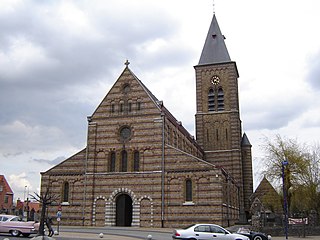
Passendale or Passchendaele is a rural Belgian village in the Zonnebeke municipality of West Flanders province. It is close to the town of Ypres, situated on the hill ridge separating the historical wetlands of the Yser and Leie valleys. It is also commonly known as a battlefield and the name of a campaign during World War I, the Battle of Passchendaele.

Hooge Crater Cemetery is a Commonwealth War Graves Commission burial ground for the dead of the First World War located in the Ypres Salient in Belgium on the Western Front. Hooge Crater Cemetery is named after a mine crater blown nearby in 1915 and located near the centre of Hooge, opposite the "Hooge Crater Museum" and separated from it by the Menin Road. Hooge itself is a small village on the Bellewaerde Ridge, about 4 kilometres east of Ypres in the Flemish province of West Flanders.
Peter Arthur Barton is a British military historian, author and filmmaker specialising in trench warfare during World War I. He has published extensively on military mining and aspects of battlefield archaeology on the Western Front, and led archaeological excavations that have been featured in several Time Team episodes. His work has led to the rediscovery of many tunnels, wartime panoramas and mass graves of soldiers.
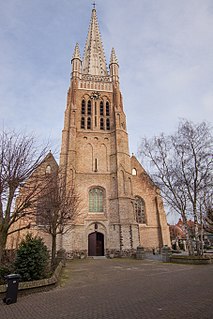
Boezinge is a village in the municipality of Ypres in the Belgian province of West Flanders. Boezinge can be reached via the N369 road in the direction of Diksmuide. It was an independent municipality until 1977.
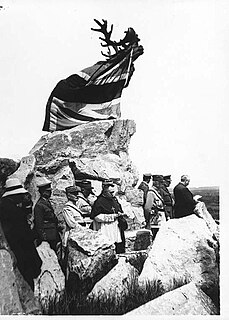
The Beaumont-Hamel Newfoundland Memorial is a memorial site in France dedicated to the commemoration of Dominion of Newfoundland forces members who were killed during World War I. The 74-acre (300,000 m2) preserved battlefield park encompasses the grounds over which the Newfoundland Regiment made their unsuccessful attack on 1 July 1916 during the first day of the Battle of the Somme.
The Vampire dugout, is a First World War underground shelter located near the Belgian village of Zonnebeke. It was created as a British brigade headquarters in early 1918 by the 171st Tunnelling Company of the Royal Engineers after the Third Battle of Ypres/Battle of Passchendaele.
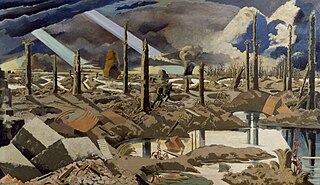
The Menin Road is a large oil painting by Paul Nash completed in 1919 that depicts a First World War battlefield. Nash was commissioned by the British War Memorials Committee to paint a battlefield scene for the proposed national Hall of Remembrance. The painting is considered one of the most iconic images of the First World War and is held by the Imperial War Museum.
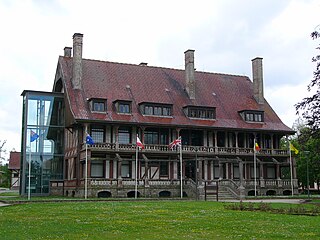
The Memorial Museum Passchendaele 1917 in Zonnebeke is a Belgian museum devoted to the 1917 Battle of Passchendaele, where in 1917 in only 100 days, almost 500,000 men were killed for only eight kilometers gain of ground. The museum is housed in the historic château grounds of Zonnebeke and focuses on the material aspects of World War I.
Serre-lès-Puisieux is a village in the commune of Puisieux in the Pas-de-Calais department in Hauts-de-France in northern France.

The Capture of Beaumont-Hamel was a tactical incident that took place during the Battle of the Somme in the Battle of the Ancre (13–18 November) during the second British attempt to take the village. Beaumont-Hamel is a commune in the Somme department of Picardy in northern France. The village had been attacked on 1 July, the First Day of the Somme. The German 2nd Army defeated the attack, inflicting many British and Newfoundland Regiment casualties.

46th Siege Battery was a heavy howitzer unit of Britain's Royal Garrison Artillery (RGA) in World War I, formed at Tynemouth with a nucleus of Territorial Force coastal gunners from Cornwall. It served on the Somme and the Ancre, at Arras and Hill 70, before going to Ypres during the battles of Autumn 1917. It then fought against the German Spring Offensive and participated in the final Allied Hundred Days Offensive. The battery was absorbed into the Regular Army after the war.
References
- ↑ "Finding The Fallen". www.findingthefallen.com. Retrieved 2009-07-26.
- ↑ "Discovery Channel UK - Official Website". www.discoverychannel.co.uk. Retrieved 2009-07-26.